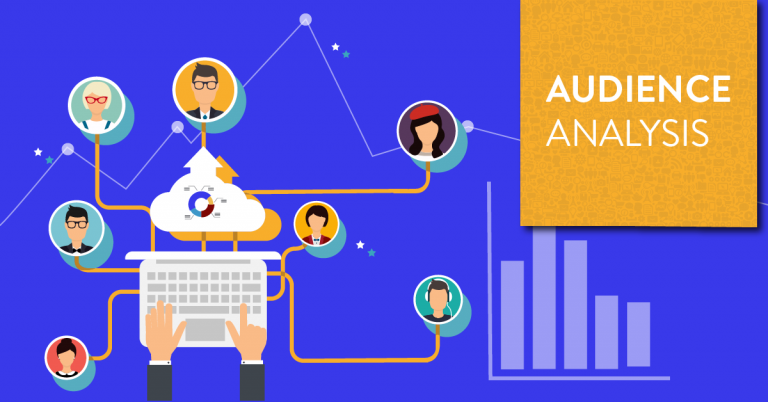What is Audience Analysis?
Audience Analysis is a research method that involves systematically studying and analyzing the characteristics, behaviors, needs, and preferences of a target audience to better understand and meet their needs. It is a critical step in fields such as marketing, communications, and public relations. This process can be conducted through various methods, including market research, surveys, data analysis, and social media analysis. Audience Analysis helps businesses or organizations formulate effective strategies to attract and retain their audience.
Audience Analysis is a dynamic process that requires continuous updating and optimization to adapt to market and audience changes. By gaining deep insights into their audience, businesses and organizations can communicate and interact more effectively, thereby achieving their business objectives and social benefits.
Purpose of Audience Analysis
- Customized Communication: Tailor communication messages according to the characteristics and needs of the audience.
- Improved Marketing Effectiveness: Enhance the effectiveness of advertising and marketing activities by understanding the audience.
- Product Development: Develop or improve products based on the needs and preferences of the audience.
- Enhanced User Satisfaction: Ensure that products or services meet the expectations of the audience.

Who Should Conduct Audience Analysis? And When?
Audience Analysis is crucial for various types of organizations and individuals, especially those reliant on effective communication, marketing, product development, and customer relationship management. Conducting Audience Analysis helps these roles and organizations better position their services, products, or information, thereby increasing efficiency and effectiveness.
The timing for conducting Audience Analysis varies depending on the context, but it is particularly necessary in the following situations:
Before Product Development or Improvement
Understanding the needs and preferences of the target market is crucial before developing new products or improving existing ones. Audience Analysis can help determine product features, functions, and positioning to ensure the product meets user needs.
Before Marketing and Advertising Campaigns
Conducting Audience Analysis before planning marketing and advertising campaigns helps identify the target audience, formulate targeted marketing strategies, and improve the effectiveness and conversion rate of advertisements.
When Entering New Markets
When a company plans to enter new geographic or segmented markets, it is essential to understand the audience characteristics, cultural differences, and consumption habits of that market. This information helps adjust products and marketing strategies, reducing entry risks.
During Strategy Evaluation and Adjustment
Regularly conducting Audience Analysis during the execution of marketing, product development, or other business strategies can help evaluate the effectiveness of these strategies. Based on audience feedback and market changes, adjustments and optimizations can be made.
During Competitive Analysis
By understanding the target audience and market positioning of competitors, companies can identify market opportunities and differentiation advantages, formulating more competitive strategies.
During Customer Relationship Management and Service Improvement
Regularly conducting Audience Analysis to understand customer feedback and satisfaction can help companies improve customer service, enhancing customer loyalty and satisfaction.

Types of Audience Analysis
Audience analysis can be categorized using different dimensions and methods. The common types of audience analysis include:
Demographic Analysis
Demographic analysis is the most fundamental type of audience analysis, focusing on the basic demographic characteristics of the audience. Key metrics include:
- Age
- Gender
- Income level
- Education level
- Occupation
- Marital status
- Family structure
- Geographic location
Psychographic Analysis
Psychographic analysis focuses on the psychological and emotional characteristics of the audience, including their values, attitudes, interests, and lifestyles. Key metrics include:
- Values and beliefs
- Interests and hobbies
- Lifestyle
- Personality traits
- Cultural background
Behavioral Analysis
Behavioral analysis examines the behavioral characteristics of the audience, especially behaviors related to products or services. Key metrics include:
- Purchase behavior
- Usage habits
- Brand loyalty
- Media consumption habits
- Online activity and social media behavior
Needs and Problems Analysis
Needs and problems analysis focuses on understanding the specific needs, pain points, and issues the audience wants to solve. Key methods include:
- Needs surveys
- User feedback
- Problem-solving research
Market Segmentation Analysis
Market segmentation analysis involves dividing the target market into distinct segments, each with unique needs and characteristics. This analysis helps in creating more targeted marketing strategies. Segmentation criteria can be based on combinations of the above analyses.
Media and Communication Analysis
Media and communication analysis examines how the audience consumes information and their media preferences. Key metrics include:
- Media consumption habits (e.g., TV, newspapers, internet)
- Social media usage habits
- Information access preferences
- Advertising exposure and response
Competitive Analysis
Competitive analysis focuses on understanding the audience of competitors and analyzing the differences and similarities between one's own audience and the competitors'. This analysis helps identify market opportunities and optimize competitive strategies.
Contextual Analysis
Contextual analysis examines audience behavior and needs in specific contexts, such as seasonal demands, special events (e.g., holidays, sports events), or particular situations.
Technology Usage Analysis
Technology usage analysis focuses on the audience's use of technology and devices. Key metrics include:
- Device usage (e.g., smartphones, tablets, computers)
- Internet access methods
- Digital skills level
These types of audience analysis can be used individually or in combination to provide more comprehensive and in-depth audience insights. The specific type of analysis chosen depends on the analysis objectives, industry characteristics, and specific needs. Through multidimensional audience analysis, businesses and organizations can more accurately understand and meet the needs of their target audience, developing more effective strategies.

How to Conduct Audience Analysis: 8 Steps
Conducting audience analysis is a systematic process that typically includes the following key steps:
Define Objectives
Clearly define what you want to achieve through audience analysis, such as improving products, developing marketing strategies, or enhancing customer satisfaction.
Identify Target Audience
Based on your business needs, initially identify your target audience. This may include demographic characteristics (e.g., age, gender), geographic location, interests, and hobbies.
Collect Data
Choose appropriate methods to collect data. These methods can include:
- Surveys: Collect audience information through online or offline surveys.
- Focus Groups: Organize group discussions to gain deeper insights into the audience's views and needs.
- In-depth Interviews: Conduct one-on-one interviews with the audience to obtain detailed feedback and insights.
- Data Analysis: Utilize existing customer data, sales data, and market research reports.
- Social Media Analysis: Analyze user behavior and feedback on social media platforms (use tools like BigSpy for competitor social media ad audience analysis).
- Website Analytics: Use tools like Google Analytics to analyze website visitor data.
Analyze Data
Use statistical software, data analysis tools, or manual methods to analyze the collected data. Key analysis methods include:
- Descriptive Statistics: Summarize and describe the basic features of the data, such as averages and distributions.
- Market Segmentation Analysis: Divide the audience into different segments and analyze the characteristics and needs of each segment.
- Cross-tabulation Analysis: Analyze relationships between different variables, such as the relationship between age and purchasing behavior.
- Trend Analysis: Identify trends in audience behavior and needs.
Create Audience Personas
Based on the analysis results, create audience personas (also known as user personas or buyer personas). These personas are typical representations of your ideal audience.
Develop Strategies
Formulate or adjust your product development, marketing, and customer service strategies based on the audience analysis results.
Test and Validate
Implement the strategies, gather feedback, and test their effectiveness to validate the accuracy of the analysis and the efficacy of the strategies.
Continuous Monitoring
Audience analysis is an ongoing process that requires regular updates and analyses to adapt to market and audience changes.
Useful Tools and Resources
- Online Survey Tools: Such as SurveyMonkey, Google Forms, etc.
- Social Media Analysis Tools: Such as Hootsuite, Buffer, Facebook Insights, BigSpy, etc.
- Market Research Reports: Industry reports, market research data, etc.
- CRM Systems: Customer Relationship Management systems to track customer interactions and purchase history.
